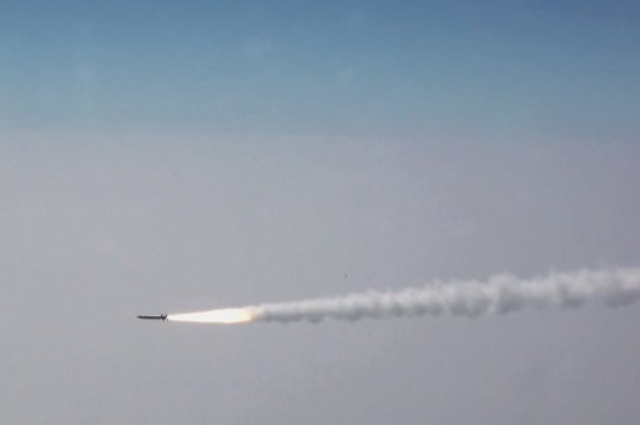
Since gaining independence, one of India's primary goals has been to achieve self-reliance in defence and defence production. Despite these efforts, this objective remains unfulfilled. Currently, India holds the position of the world’s largest importer of defence equipment and is projected to spend approximately USD 220 billion over the next decade to modernize its armed forces.
The Role of Technological Innovation
Globally, recent years have witnessed rapid technological advancements across various sectors such as telecommunications, information technology, and connectivity. These innovations have profoundly impacted our daily lives. Recognizing this trend, the Indian government has launched several initiatives like Make In India, Startup India, and the Atal Innovation Mission (AIM) to foster innovation and entrepreneurship within the Indian commercial ecosystem. These efforts aim to boost domestic manufacturing, including in the defence sector.
Government Initiatives and Innovation
The push towards self-sufficiency in defence demands the rapid integration of innovative technologies into the weapons procurement process. To achieve this, the Ministry of Defence is working to build an ecosystem that promotes innovation and technological development by engaging research and development institutes, academia, industries, start-ups, and individual innovators.
The Need for Collaboration
In recent years, collaborating with innovators has become essential for corporations, governments, and philanthropic organizations to avoid being outpaced by more nimble and responsive competitors. While the threat of market disruption is less pronounced in state functions and public services due to natural monopolies, national defence cannot afford to lag behind potential adversaries whose capabilities are often enhanced by new technologies.
Engaging Small Enterprises and Start-ups
The rate of innovation adoption varies across sectors, influenced by factors such as applicability and the system’s absorption capacity. To ensure the Indian military receives innovative and effective technological solutions, a concerted effort is needed to engage smaller enterprises, start-ups, and individual inventors who possess the flexibility and adaptability required. Developing a system that encourages innovation in the defence sector will necessitate the involvement of the nation’s industries, start-ups, MSMEs, R&D institutes, academia, and individual inventors.
By fostering a robust innovation ecosystem, India can move closer to its goal of self-reliance in defence, ensuring that its military capabilities keep pace with technological advancements and potential adversaries.
Enhancing India's Defence with the ADITI Scheme
In a strategic move to strengthen defence capabilities and minimize reliance on foreign imports, the Indian government has introduced the Acing Development of Innovative Technologies with iDEX (ADITI) scheme. This initiative was announced during the DefConnect 2024 event in New Delhi and is designed to foster innovation in crucial and strategic defence technologies. The scheme provides financial grants of up to Rs 25 crore to qualifying start-ups engaged in research, development, and innovation in defence technology.
Framework and Budget Allocation
The ADITI scheme operates under the larger Innovations for Defence Excellence (iDEX) program, which is managed by the Department of Defence Production (DDP) within the Ministry of Defence. For the period from 2023-24 to 2025-26, a budget of Rs 750 crore has been allocated to the ADITI scheme. The main goal is to develop around 30 deep-tech critical and strategic technologies. This initiative aims to boost India's defence capabilities and significantly reduce dependence on foreign imports.
Collaboration and Challenges
A key aspect of the ADITI scheme is the collaboration between the government and the armed forces. The Indian Army, Navy, Air Force, and Defence Space Agency have identified specific challenges that need innovative solutions. By tapping into the expertise of start-ups and the creativity of young innovators, ADITI seeks to speed up the development and implementation of homegrown defence technologies. This collaboration is expected to enhance India’s defence readiness and resilience.
Focus on Indigenous Innovation
Defence Minister Rajnath Singh has underscored the significance of nurturing local capabilities and encouraging innovation in the defence sector. He pointed out the expansion of support for young innovators through initiatives like iDEX Prime, where the financial assistance has been increased from Rs 1.5 crore to Rs 10 crore. This heightened support is intended to motivate innovation, attract talent, and stimulate the growth of a dynamic defence innovation ecosystem within the country.
The ADITI scheme represents a major step forward in India's efforts to achieve self-reliance in defence technology. By fostering collaboration between the government, armed forces, and innovative start-ups, and by providing substantial financial support, the scheme aims to create a robust defence innovation landscape. This initiative not only seeks to strengthen India’s defence capabilities but also to position the country as a leader in indigenous defence technologies.
India Successfully Tests RudraM-II Missile
A Significant Achievement in Missile Technology:
On Wednesday, India marked a significant milestone in its defense capabilities by successfully flight-testing the RudraM-II Air-to-Surface missile from the Su-30 MK-I aircraft of the Indian Air Force. This critical test was conducted by the Defence Research and Development Organisation (DRDO) off the coast of Odisha at approximately 11:30 am, as reported by the Ministry of Defence.
Test Objectives and Validation:
The primary objectives of the flight test were to validate the missile's propulsion system and its control and guidance algorithms. According to the Ministry of Defence, the test met all these objectives. The performance data was gathered using various range tracking instruments, such as electro-optical systems, radar, and telemetry stations. These instruments were deployed by the Integrated Test Range, Chandipur at different locations, including an on-board ship, ensuring comprehensive data collection.
Indigenous Technology and Capabilities:
RudraM-II is an indigenously developed missile system that utilizes solid propulsion. It is specifically designed for Air-to-Surface operations, aiming to neutralize a variety of enemy targets. The missile incorporates a range of advanced technologies developed by various DRDO laboratories, showcasing India's growing prowess in indigenous defense technology
Official Statements and Congratulatory Messages
Defence Minister Rajnath Singh praised the DRDO, the Indian Air Force, and industry partners for the successful test-flight of RudraM-II. He highlighted that this success reinforces the missile's role as a significant force multiplier for the Armed Forces. Similarly, Dr. Samir V. Kamat, Secretary of the Department of Defence R&D and Chairman of DRDO, lauded the efforts of the DRDO team, acknowledging their relentless work and contributions that led to the successful test.
The successful flight test of the RudraM-II missile not only validates India's advanced technological capabilities but also strengthens its defense preparedness. This achievement underscores the importance of continued innovation and development in indigenous defense technologies, ensuring that India's Armed Forces are well-equipped to face any challenges.
. . .
References:

